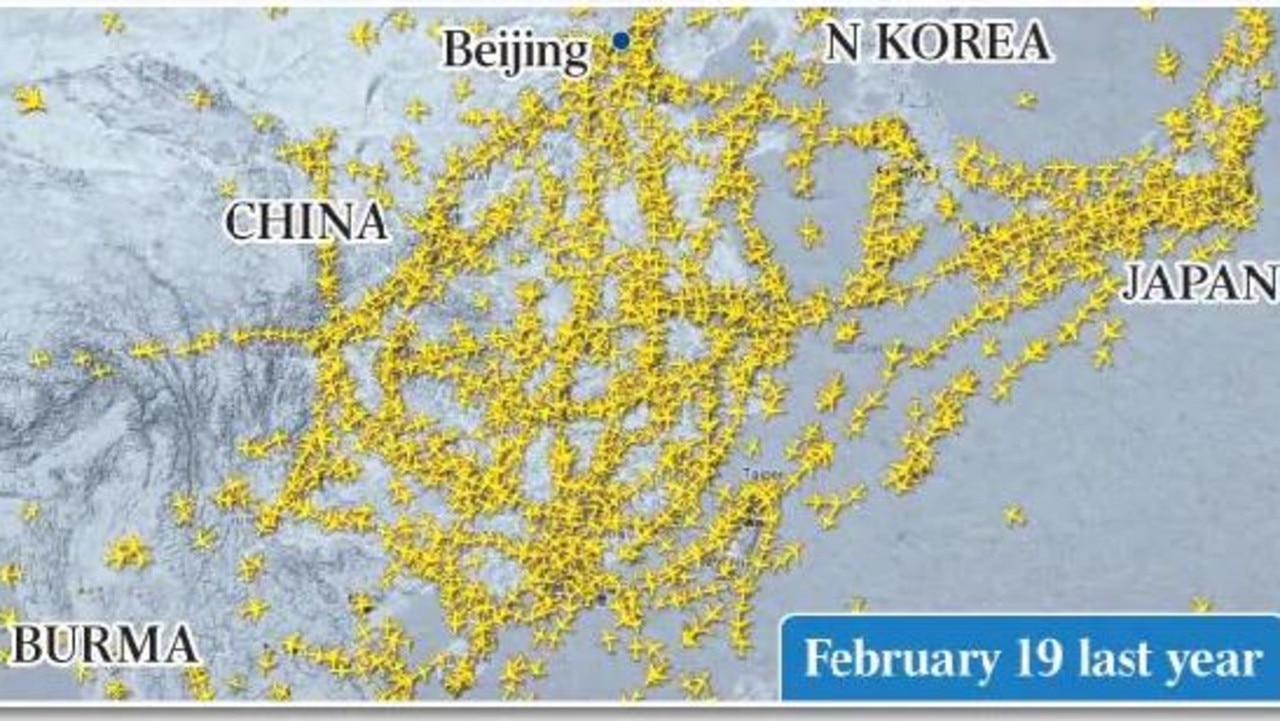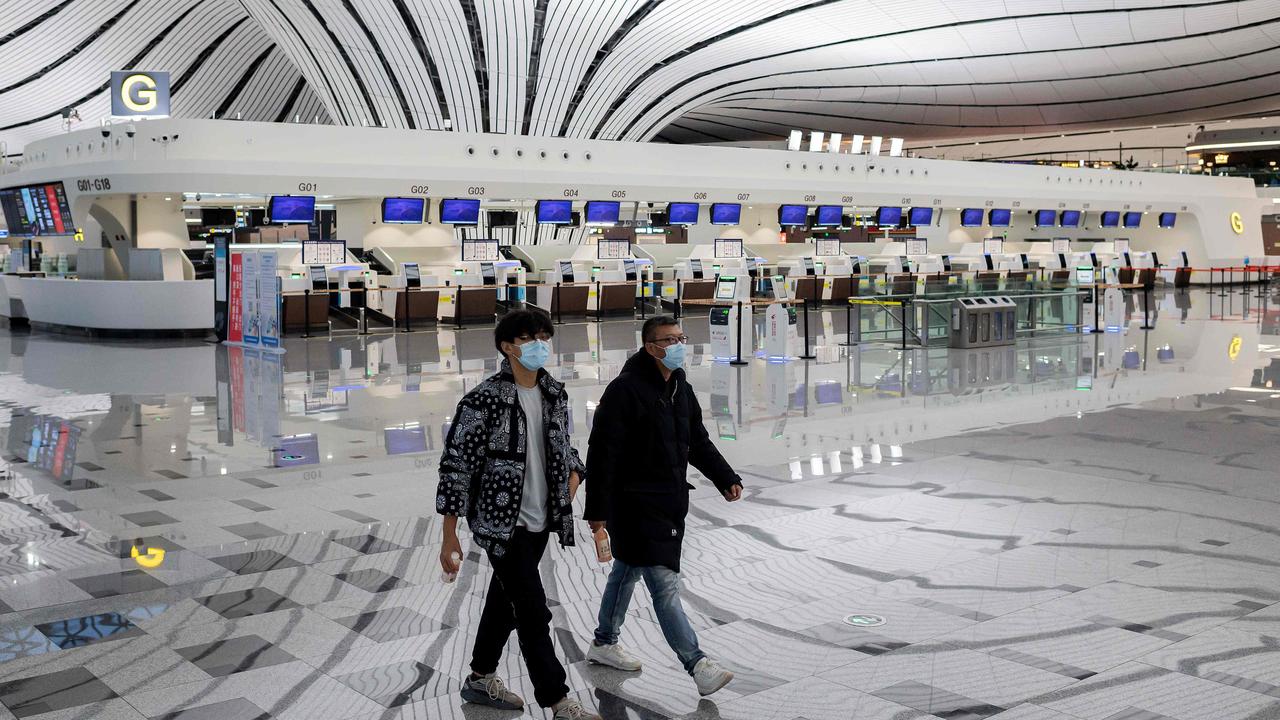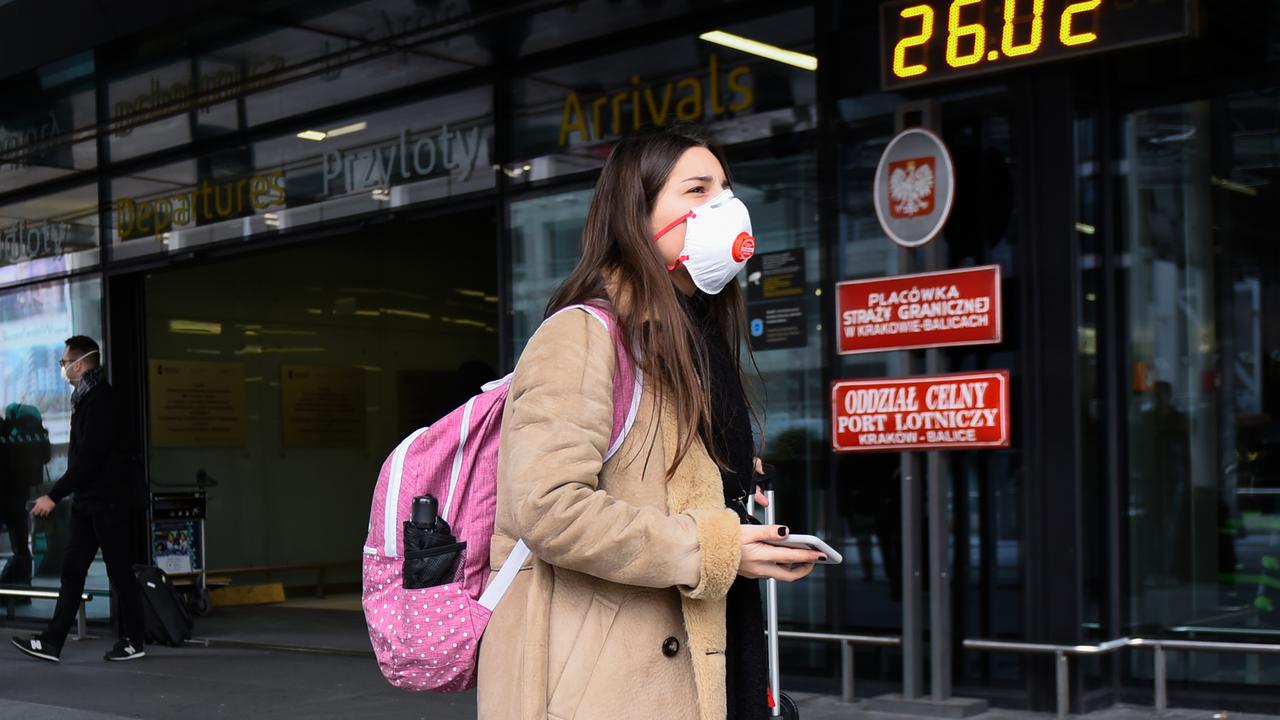Impact of coronavirus revealed by stark difference in flight radar from last year to now
Anxiety about coronavirus has been growing for weeks, but nowhere has it been so apparent than in this flight radar map.

The coronavirus crisis will have an even bigger impact on global aviation than the New York terror attacks of 9/11, experts warn.
Qantas and Virgin Australia are among the carriers that have slashed services to China and across Asia in response to weaker demand due to the coronavirus outbreak.
The downtown in demand is partly due to government-issued travel bans to stop the spread of the virus, including the Department of Foreign Affair’s “do not travel” warning for China and heightened warnings for Japan and South Korea due to risk of virus transmission.
But it has been spurred by a general anxiety around international travel, with holiday-makers cancelling plans or delaying future trips out of fear of being exposed to coronavirus.
RELATED: Follow our coronavirus updates
British Airways, Air Canada, Air France-KLM, Lufthansa, American Airlines, United Airlines and Delta are among the airlines that have suspended thousands of flights to China in the wake of the outbreak.
Flight radar maps published by the Wall Street Journal show staggering difference in the volume of air traffic around China on February 19, and the same day last year.


China’s busiest airports have seen a massive 80 per cent drop in traffic since the coronavirus outbreak began, the Journal reports, and global capacity has fallen more than it did after the September 11 terror attacks in 2001 and the SARS outbreak in 2002-03.
“I think we have a whole different ball game now compared to the 2001-2003 issues,” Phil Seymour, CEO of IBA Aviation Consultancy, told the Journal.
With China being the world’s second-largest aviation market, the financial impact on airlines due to the fall in Asian air traffic will be huge.
The International Air Transport Association projects a loss in global revenue this year of about $44.7 billion.
And that’s not just because of the flight tickets airlines aren’t selling – the cost of keeping planes grounded alone is an enormous financial hit.

“A narrow-body aircraft is costing in the order of $US10,000 ($A15,270) a day, whether that’s being financed or whether it’s being leased,” Mr Seymour said.
“If you’re not flying it, it’s not just the $10,000 per day, per aircraft – you’ve got crews sitting around, flight crews, cabin crews. The aircraft itself will still need maintenance.
“A new, wide-body aircraft is going to be costing as much as $US50,000 ($A76,300) a day.”
Qantas said last week it expected reduced travel due to coronavirus would slice between $100 million and $150 million from its earnings this year, although it said that would be softened by lower fuel prices.
Reduced demand has forced Qantas to reduce flights to Asia by 16 per cent until May at least, impacting flights to mainland China, Hong Kong and Singapore.
Its subsidiary Jetstar will cut its capacity to Asia by 14 per cent, affecting flights to Japan and Thailand. Qantas domestic services are also being cut back.

Meanwhile, Virgin Australia announced yesterday it was slashing the fleet of its Tigerair budget airline and cutting back on flights amid falling demand caused by coronavirus.
The airline said impacts due to coronavirus will hit earnings by $50 million to $75 million in the second half of the year.
Flight Centre said today it expected to potentially lose $100 million in earnings as a result of reduced travel due to coronavirus. The company has slashed its full-year profit before tax to $240 million to $300 million, down from its previous forecast of $310 million to $350 million.
Airlines in China are so desperate for travellers, they’re slashing fares to unprecedented low prices. Chinese low-cost carrier Spring Airlines is selling flights from Shanghai to Chongqing for just 29 yuan, or $6.30, the South China Morning Post reports.
As the virus spreads, flight cuts are likely to be felt in other parts of the world.
Airlines are increasingly cancelling services to Iran and South Korea, which has seen a recent spike in cases, and there are concerns it could extend to Italy, which is experiencing one of the biggest cluster of cases outside mainland China.
Delta Air Lines has started offering waivers to customers scheduled to fly to Italy, while the Australian government is warning travellers to exercise a high degree of caution if they are heading to Lombardy and Veneto in Italy’s north.




